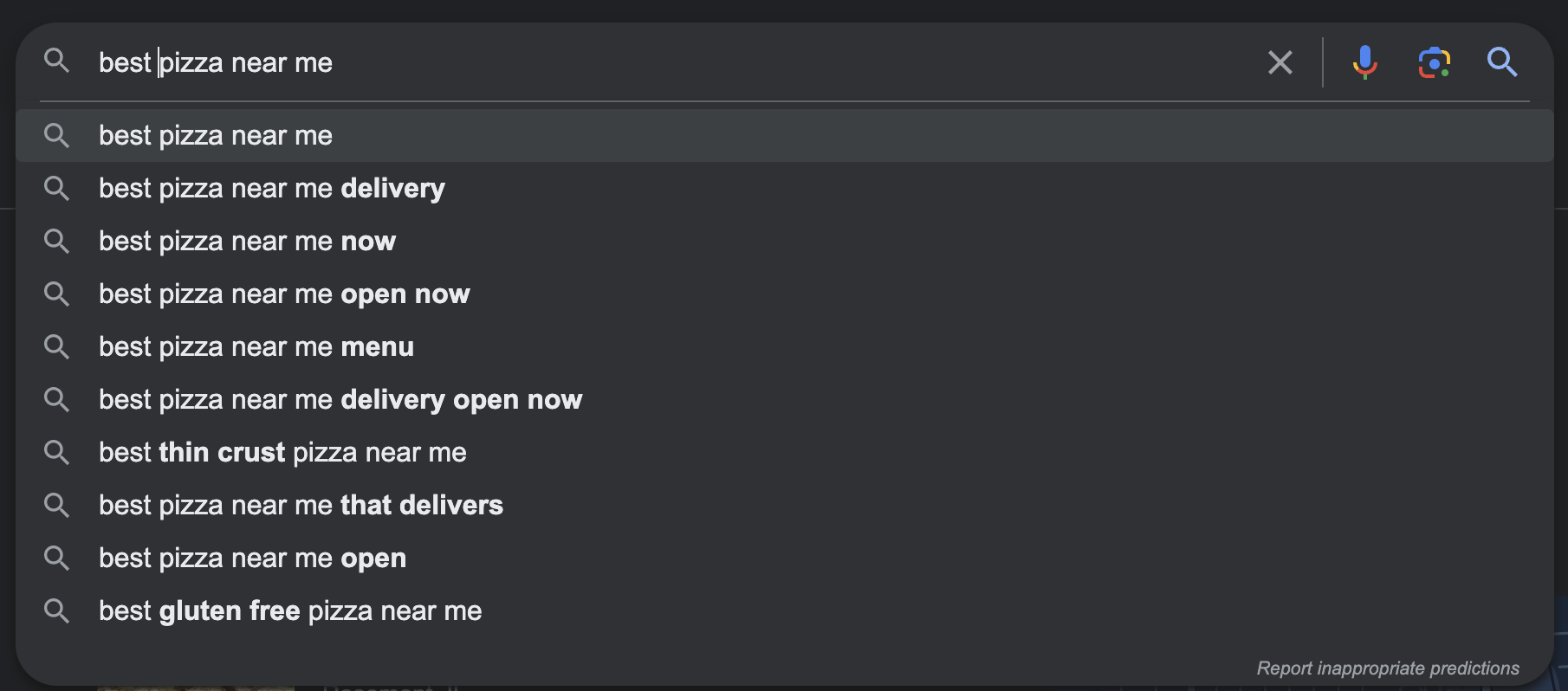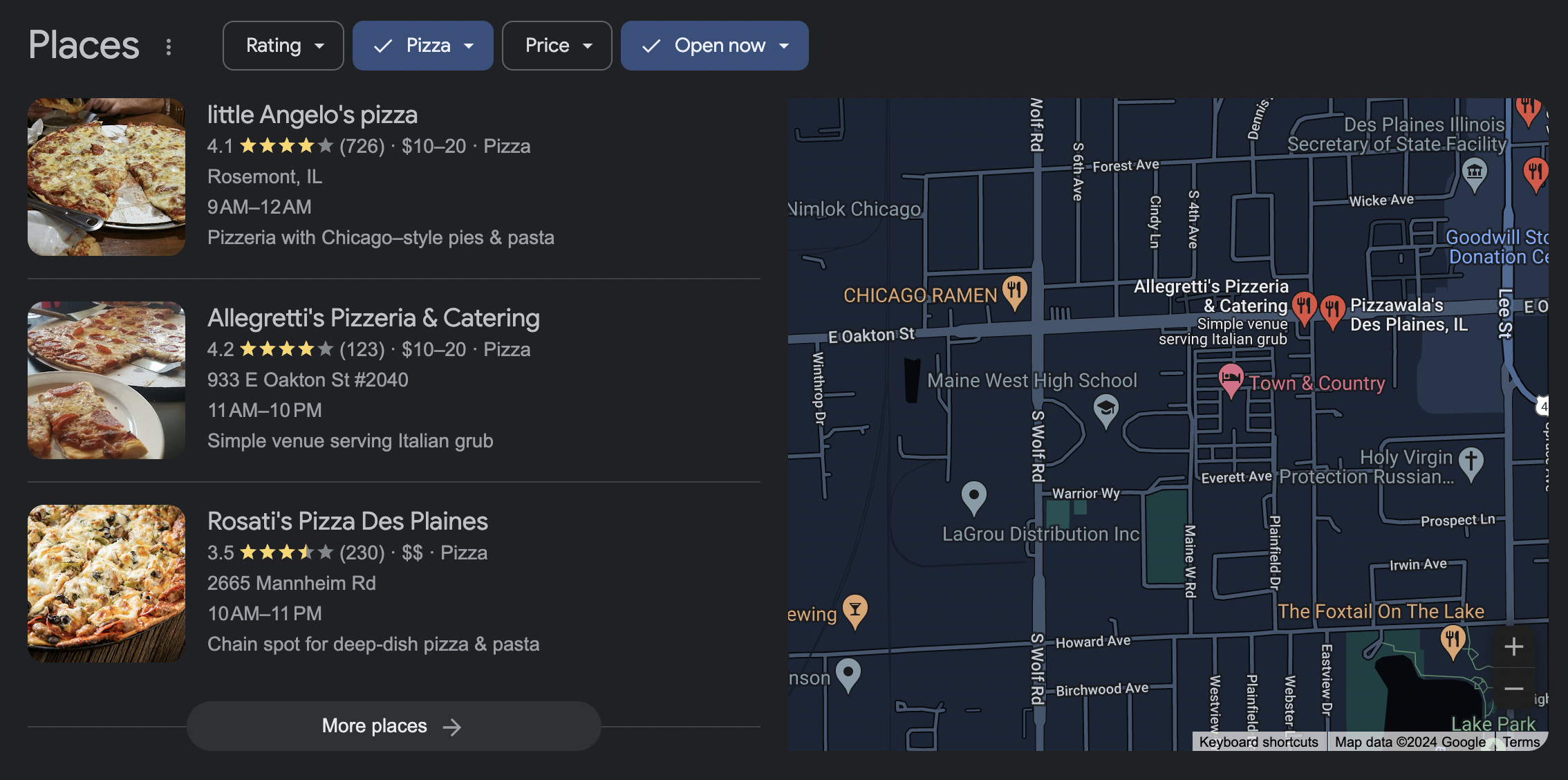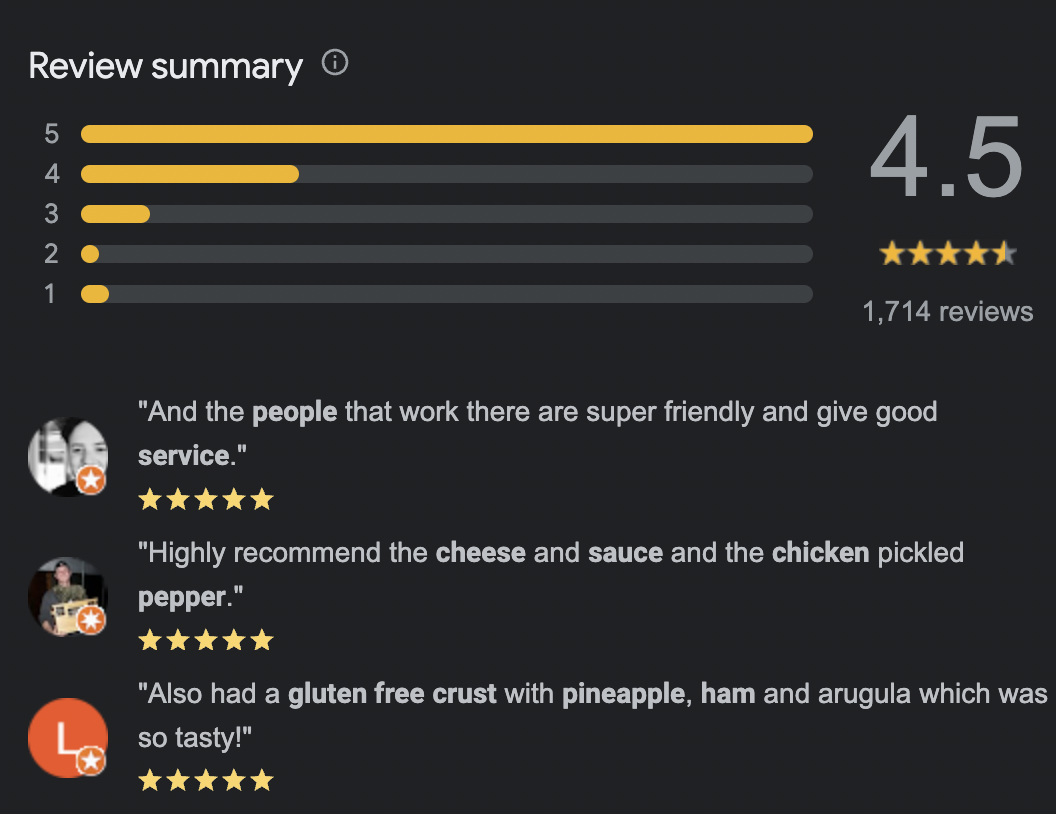Strategy
How To Craft an Effective Local SEO Content Strategy
My partner and I have a sacred weekend ritual: Pizza Fridays. A few weeks ago, we found ourselves in Minneapolis, a city neither of us know well, for the occasion. Naturally, we turned to our go-to expert on all things local and delicious: Google. A quick search for “best pizza near me” yielded several promising prospects, and we selected one for our weekly fix.
As a frequent traveler, I type in Google searches like this all the time, whether I’m looking for a satisfying slice or a sweaty HIIT class (I’ve got two speeds) — and this is precisely why local SEO content strategy is so critical for businesses.
According to data directly from Google, searches containing the phrase “open now near me” have grown globally by over 400% year-over-year. What’s more, searches on Google Maps for “shopping near me” are on the rise by more than 100% year-over-year.

So, what is local search optimization, and why is it important? Here’s what to know in 2024.
Is Local Search Important for SEO?
Recent research suggests so—particularly if you care about reaching younger consumers. According to data from ReviewTrackers 42% of millennials who perform a local search will go on to visit that business “most of the time.” This group is also 50% more likely than other generational cohorts to conduct local searches while they’re on the go.
What’s more, local search can be a great equalizer. When executed well, a local SEO content strategy can offer mom-and-pop shops the chance to spar with enterprise-sized businesses with multiple locations. The Little Angelo’s Pizzarias get the chance to compete with the Papa Johns.

All that said, it’s worth noting that the SEO game is changing by the day. Google is currently taking steps to adapt to the era of generative AI. In 2022, the company updated its Search Quality Rater Guidelines to prioritize content that contains expert insights, firsthand experiences, and “genuinely helpful” advice. Earlier this year, Google announced a full-court press to reduce “low-quality, unoriginal content” in search results by as much as 40%.
While only time will tell what the future of SEO has in store, for the time being, local search is still worth investing in. For one thing, there’s less competition locally than on the national or global stage. For another, focusing on local SEO allows businesses to connect more directly and personally with their target audience. Further, local SEO can help brands achieve higher conversion rates by targeting users in the immediate vicinity who are actively looking for products or services. And lastly, with 58% of businesses still not optimizing for local search, there are plenty of opportunities to gain a competitive edge.
Local SEO Content Strategy: Designing for Success
When analyzing content for local SEO, Google’s algorithm takes factors like relevance, distance, and prominence into account. It generates two types of results for local queries: “organic results,” or the blue links you’re accustomed to seeing on Search Engine Results Pages (SERP); and “local pack,” which showcases top business listings on Google Maps. Businesses seeking to maximize visibility should aim to appear in both.
You can enrich your local SEO strategy by taking steps like:
- Claiming and Optimizing Your ‘Google My Business’ Listing: This is a fundamental first step. Ensure your Name, Address, and Phone Number (NAP) information is accurate. You’ll also want to leverage the power of reviews and photos to boost your local presence.
- Weaving Local Keywords Into Your Website and Content: Tailor your content to include keywords that reflect local tastes, trends, and lingo. This isn’t just about inserting a city name into your content—you need to understand the nuances of how local customers search for your products or services. Tools that can help with this process include Google’s Keyword Planner, Moz Local, and SEMrush’s Keyword Magic Tool.
- Optimizing for Mobile: The majority of local searches are now conducted on mobile devices. It’s critical to ensure your website, blog, and anywhere else you publish content is mobile-friendly.
- Building Local Backlinks: Establishing links from reputable, relevant local sources—like regional newspapers or business associations—can boost your visibility in local search results.
How to Write Content for Local SEO
The first step is to create content that’s locally relevant. Let’s take the Minneapolis-based pizza parlor. Blog topics they could explore include:
- “The History of Pizza in Minneapolis: How the Slice Became a Local Staple”
- “Celebrating Local Ingredients in Our Pizzas: A Farm-to-Table Approach”
- “How Our Minneapolis Pizzeria Embraces Eco-Friendly Practices”
You’ll also want to stay on top of local industry trends to identify possible content plays. It’s a good idea to subscribe to local news sites and sign up for alerts on local events relevant to your industry (e.g., food festivals, culinary awards, state fairs). Maybe this research leads you to discover an uptick in veganism in your community—the perfect opportunity to write about your new vegan cheese options.

Asking local influencers to share their experiences or hosting community events are other avenues to explore. Such collaborations not only boost your visibility and credibility online, but they can also help you build genuine relationships with local movers and shakers. For example, you could engage with a local food blogger or critic and ask them to post to their social media or review sites. Don’t forget to amplify their content on your own website, blog, and social accounts.
To Conquer Local SEO Content, Think Bigger Picture
When it comes to content marketing strategies for local SEO, general best practices still apply. You’ve heard these tips from us before: Use experts and trusted voices for original quotes, reviews, or testimonials. Prioritize quality over quantity. Offer something in return for readers’ time—like valuable intel or exclusive offers.
Partnering with other companies that complement your offerings can be another fruitful tactic. For example, maybe the Minneapolis pizza place could work with the brewery across the street to create content around “perfect pizza and craft beer pairings.” They could conclude the post with a call to action (CTA) to sign up for both companies’ email newsletters and offer a 15%-off discount code to customers who do.
If your business has the budget, it may also be worth exploring content that goes beyond text. SEMrush notes that video SEO and visual search are increasingly important elements of an effective SEO strategy. In the context of local SEO, photos can be particularly effective—Google’s “Photo Map” option, for example, showcases a business’s location via user-generated images.
Effective local SEO content strategy is about more than just ticking boxes. By going beyond the basics and exploring collaborative, multimedia, and value-added content strategies, you can boost your local presence online and connect more deeply with your community—or, at the very least, with the hungry couple down the street looking for pizza.
Ask The Content Strategist: FAQs About Local SEO Strategies
How do you measure the success of a local SEO content strategy?
On top of using tools like Google Analytics or SEMrush, measuring success often comes down to seeing more foot traffic (if you have a physical location) or noticing a bump in local online inquiries or sales. You may even find more locals dropping by and saying, “I found you on Google!” These are all good signs your local SEO strategy is working.
Are there different strategies for content marketing for local SEO between various types of businesses or industries?
Absolutely, different businesses and industries have to tweak their local SEO strategies. A restaurant might focus on reviews and Google My Business photos, while a law firm might concentrate on publishing informative local legal guides. It’s all about what makes sense for your target audience.
What role does social media play in local SEO, and how can businesses integrate their social media and local SEO strategies?
Social media can boost your local SEO efforts by driving local engagement and awareness. Integrating them can be as simple as using local hashtags, sharing location-tagged posts, or running social media campaigns that highlight local content or events.
Are you in search of more content about editorial strategy? Subscribe now to The Content Strategist and never miss a story!
Image byRibkhan
Get better at your job right now.
Read our monthly newsletter to master content marketing. It’s made for marketers, creators, and everyone in between.




